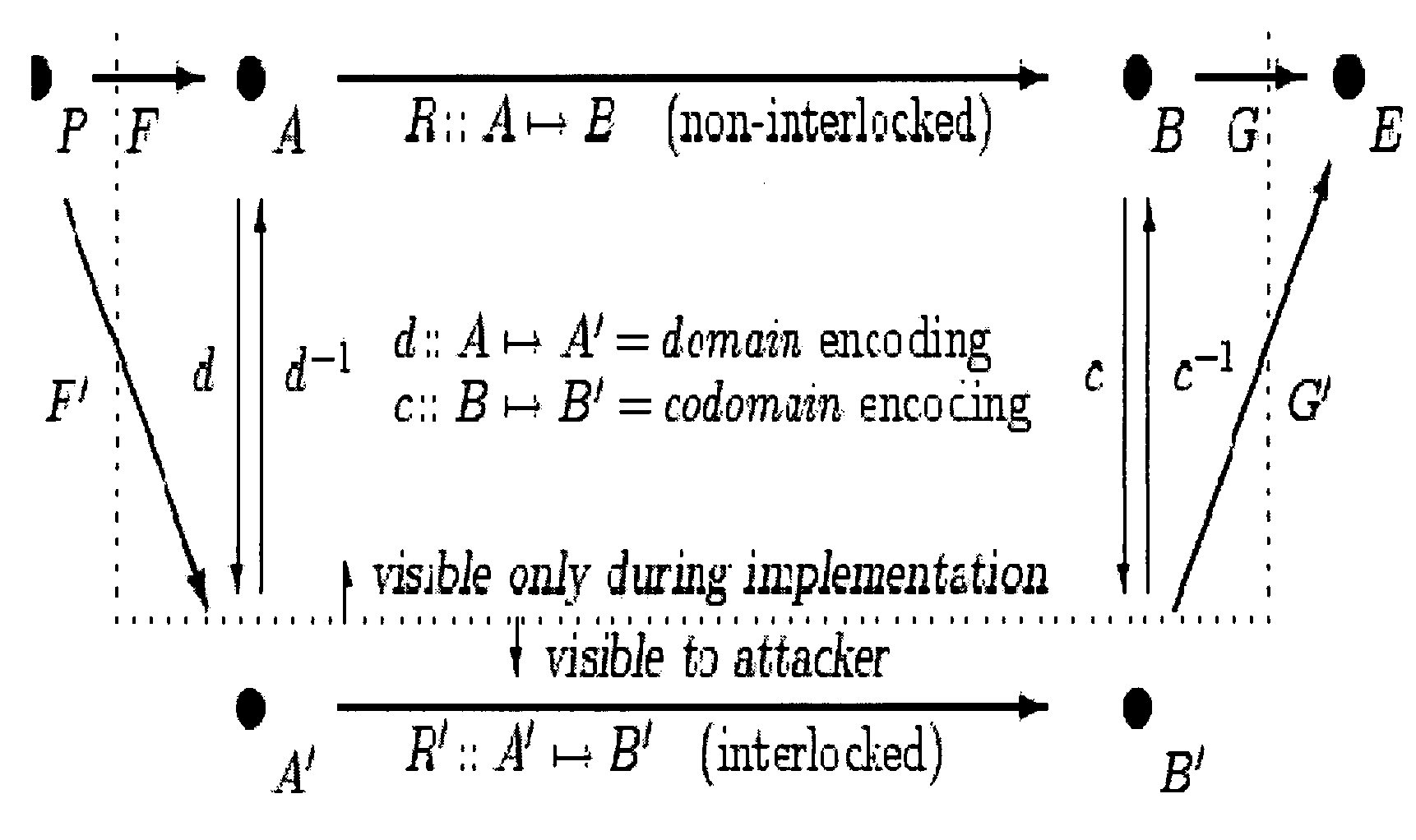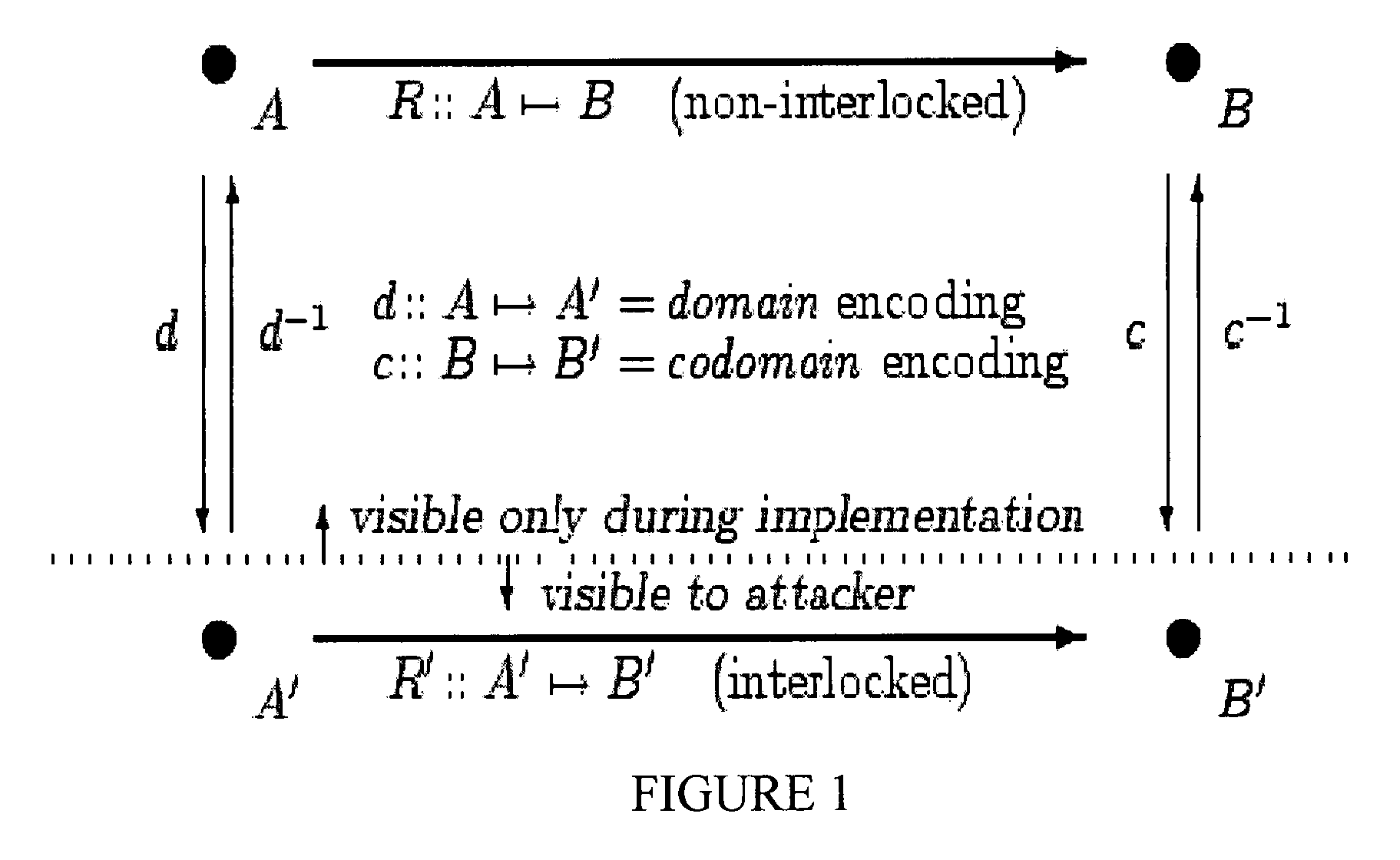System and method of interlocking to protect software - mediated program and device behaviors
a software and program behavior technology, applied in the field of compiler technology, can solve the problems of high cost and consequently high profit of the thief, and code errors of formal models or conceptual errors of the system, and achieve the effect of preventing the unauthorized use of memory
- Summary
- Abstract
- Description
- Claims
- Application Information
AI Technical Summary
Benefits of technology
Problems solved by technology
Method used
Image
Examples
case 1
[0504] Absent or Weak X→Y Data Dependency. If there are no such values, or insufficiently many such values computed in the preproduction BB set X and subsequently employed in the preconsumption BB set Y, possibly after further modifications in the pretransfer BB set V, we must add or increase the number of such dependencies. After this has been done to a sufficient degree, we have established strong X→Y data dependency, and can proceed as indicated in Case 2: Strong X→Y Data Dependency below.
[0505]To increase the X→Y data dependency, we may employ the encoding system of [20], or the extension thereof taught in § 2.7.7, in the specialized manner described below.
[0506]In the encoding system of [20], for an integer value x in BA[n] where n is the normal word size of the target execution environment, we encode x as x′=sx+b, where s is the scale and b is the bias. b is arbitrary, but s should be odd, so as to preserve all of the bits of information in x. [20] teaches how we may compute w...
case 2
[0514] Strong X→Y Data Dependency. If there are enough such values computed in X and employed in Y, possibly after further modifications in V, then we may define J to be the state space of copies of these values, K to be the state space of these copies after being modified as their originals are modified by R, and G to make use of the copies as described hereinafter.
[0515]Then we have FOE:: PA×J:-FOE(X)=(x,x+) where x+εK is obtained by performing the computation of the selected values again so as to produce the copied results in K. Of course, at this point, the output extension is insecure, because the computations to produce x+are copied from existing subcomputations of F by X. We will address this problem in further steps as described hereinafter. (Note that x+ may include the values of many variables, since it is a copy of some portion of a state space of the program.)
[0516]Duplicated values are the preferred embodiment, but other information-preserving alternatives exist, such a...
PUM
 Login to View More
Login to View More Abstract
Description
Claims
Application Information
 Login to View More
Login to View More - R&D
- Intellectual Property
- Life Sciences
- Materials
- Tech Scout
- Unparalleled Data Quality
- Higher Quality Content
- 60% Fewer Hallucinations
Browse by: Latest US Patents, China's latest patents, Technical Efficacy Thesaurus, Application Domain, Technology Topic, Popular Technical Reports.
© 2025 PatSnap. All rights reserved.Legal|Privacy policy|Modern Slavery Act Transparency Statement|Sitemap|About US| Contact US: help@patsnap.com



